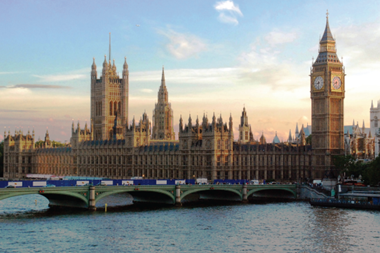A recent court decision in favour of four pensioners, which ordered the government to consider compensating members of final salary schemes who lost funds when their schemes wound up between 1995 and 2004, could open up potential unlimited future liability for the government and the UK tax-payer.
The basis of the decision was that government publications had misled pensioners into believing their benefits were secure, when it turned out they were not.
The major crime of successive governments has been to enact repeated legislation, which has inadvertently endangered the savings of thousands, and possibly millions of final salary scheme members. While governments could claim that they did not anticipate the outcomes of each of their decisions, repeatedly making the same mistake over and again leads to the conclusion that policy makers have been either grossly incompetent or acting deliberately.
The infamous abolition of advanced corporation tax on the part of the current UK chancellor of the exchequer, reduced the returns of schemes, and hence increased their costs, making deficits larger in the long run.
Most pension scheme legislation has been passed with the aim of protecting some or all of final salary scheme members’ benefits. This normally has the consequence of making benefits more expensive, increasing deficits and therefore making members’ benefits less secure. It makes employers more reluctant to introduce final salary schemes, or to try and close existing schemes.
An example was the introduction of mandatory index-linked benefits, which caused pension schemes to become much more expensive. Possibly the most harmful piece of legislation was Section 75 of the Pensions Act 1995. When schemes wind-up they are forced to buy-out their liabilities through an insurance company. Buyout prices are high at the moment due to a lack of competition in the market and because of historically low interest rates. The cost of a buyout can be 50% higher than the cost of a scheme on an ongoing basis. So if a scheme is 100% funded on an ongoing basis, it may only be two-thirds funded on a buyout basis.
Then net result is that employers are locked into existing final salary schemes, and if the sponsoring employer goes into receivership, a large portion of member’s benefits will not be covered. The rules of a scheme specify the priorities on wind-up, existing pensioners are the first priority. This can mean that some scheme members get nothing if the pensioners use up all the assets.
What does this all mean for the future? Well, the court decision only referred to schemes that wound up to 2005, affecting between 75,000 and 125,000 people. Liability for the government could be as much as £15bn (€22bn), although this figure is the subject of debate.
Schemes that wind-up after 2005 are insured by the Pension Protection Fund (PPF). The PPF, funded by a levy on current schemes, was set up to compensate members of final salary schemes who have lost out because their employer went bankrupt. Members are protected and the government will not be liable.
Or are they? Not all benefits will be compensated; only 90% of pensions not yet in payment will be paid. The maximum pension is capped, and pension increases are only paid on post 1997 benefits. Therefore if someone’s benefit is capped, they could in theory take action against the government for the part of their pension for which they will not receive compensation from the PPF.
Second, how secure is the PPF? In 2006 the PPF collected £324m, and it aims to collect £675m this year. According to its own calculations, the total outstanding deficit on a compensation basis is £76bn. The real risk is that deficits are highly concentrated. For example, the largest disclosed deficit last year of a FTSE 100 company is over £5bn, with 16 companies deficits over £1bn. The basis on which the PPF calculates compensation is slightly weaker than that disclosed in the accounts, but it would be safe to say that if any one of these companies went bankrupt and their pensions went into wind-up, this would use up practically all of the PPF’s resources.
Potential PPF liabilities are highly concentrated by sector. Specifically, the manufacturing sector accounts for approximately 30% of liabilities. These companies tend to be highly geared and are particularly vulnerable in economic downturns. An economic shock affecting one of these firms is likely to affect many of them - in insurance terms there is a high degree of covariate risk. Such a shock is likely to accompany a fall in equity prices, which would worsen schemes’ solvency.
The court’s ruling - that by publishing misleading information the government could be liable to compensate final salary members - could mean an open-ended liability for the UK taxpayer. The overall deficit for final salary schemes on a buy-out basis is probably close to £500bn. That is, if the government has not published any misleading information.
So what should the government do to improve member security and reduce its own potential exposure? It could start by repealing harmful legislation.
First, it could abolish the PPF. Providing only limited cover, it also adds to the cost of well funded schemes and introduces a moral hazard; employers facing financial problems or in administration could agree to larger pension benefits in return for salary concessions knowing that the PPF and ultimately the tax payer would pay, or even file for bankruptcy.
Possibly the most perverse legislation is section 75 of the Pensions Act 1995, which forces trustees to wind up schemes and therefore penalises employers who happen to have a final salary scheme. It is impractical for very large schemes to wind-up as there is not enough capacity in the market. Without section 75 it would be rational and desirable for schemes to gradually nurse themselves back to health and buy-out at a more opportune time. This would be a job for skilled trustees.
Abolishing the requirement for indexation of pensions would also be beneficial. This was introduced in 1997 adding an extra 25% to the cost of pensions. Previously, pension increases were discretionary in many schemes. When a scheme’s asset returns were high, members were awarded a higher pension, allowing greater flexibility, stability and diversity of investments. Pension increases should be a bonus that can be achieved more cheaply and consistently provided that trustees are skilled and incentives are aligned well with scheme members’ interests.
Governments could also improve the efficiency and management of schemes by reforming their structure. For example, trustees’ incentives are not aligned with those of the employer sponsoring the schemes or the scheme members themselves, as they are severely punished for mistakes and not rewarded for innovation - they unsurprisingly choose to follow the herd. It is ridiculous to have amateur trustees who are responsible for investing billions of pounds and navigating incredibly complex legislation. As a result they end up overly reliant on advisers, whose rewards are not necessarily in the scheme’s best interest. A modest proposal would be to structure schemes similarly to a limited company with scheme members akin to shareholders with voting rights and a board of professional trustees, who could be hired and fired by the members.
Just as companies’ risk management has improved recently due to financial innovation, so pension funds’ solvency could be improved by introducing flexibility into their behaviour. For example, legislation could:
q Encourage tradeable pension debt so that the most efficient financier can take on the cost. For example, a higher credit rating company could be allowed to buy pension debt from another company.;
q Allowing debt/equity swap. In cases of large deficit, the trustees should be able to swap pension debt for equity in the sponsoring company. This would reduce the financial burden to employers but would alter the power relationship between scheme and company;
q Innovation in the supply of assets. The government could take a lead on the introduction of suitable bonds to match pension liabilities, for example marketing bonds with longer redemption dates and bonds with returns linked to earnings, or longevity bonds. The government would benefit by diversifying and increasing liquidity on its debt.
Nick Silver FIA is director of Silver Acturial Services, honorary senior visiting fellow at Cass Business School and co-ordinator of the IEA Empowerment Through Savings programme













